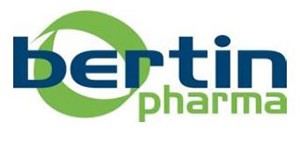Context
The majority of approved drugs have poor solubility and permeability. Reducing the particle size and surface area of the API (Active Pharmaceutical Ingredient) increases drug performance and bioavailability. The Precellys®24 with Cryolys was validated for drug nano-sizing using different milling protocols.
Materials
- Precellys®24 Homogenizer + Cryolys
- Precellys lysing kits: different bead sizes, material, and concentration were tested in 2mL reinforced tubes
- Samples: 5 mg/mL of Indomethacin, Ibuprofen, and Itraconazole were used as models of poorly water-soluble API
- Aqueous vehicles: 0.5% Pluronic® F68 and 0.5% HPC (low viscosity) dissolved in 1mL of ultrapure water
- Oily-based vehicles: 1mL each of soybean and peanut oils (Olvea), glycerol monocaprylocaprate (Capmul® MCM) and triglycerides (Miglyol® 812N and 840)
Protocol
- Precellys® 24: 5500 rpm, 24 cycles x 30s, 5s pause
- Cryolys cooling unit: Maintained a sample chamber temperature between 2-4°C
- Nano-milling efficiency was studied using different parameters: bead diameter (0.5-2.8 mm), bead concentration (1-4 g/ml) and material (yytrium stabilized zirconia, zirconium oxide, VHD zirconium oxide and stainless steel). Particle size after nano-milling was measured by a Malvern Zetasizer (dynamic light scattering).
Results
The particle size distribution of indomethacin (IN), ibuprofen (IB), and itraconazole (IT) was determined using microscopy. The average particle diameter (D50) was calculated as 27 μm (IN), 144 μm (IB) and 14 μm (IT), respectively. When using aqueous vehicles, the smallest particle sizes were obtained using 0.6-0.8mm yytrium stabilized zirconia at a bead concentration of 2 grams/mL (Figure 1A, highlighted in yellow). The use of Capmul MCM® yielded the smallest particle sizes for all three drug compounds tested (Figure 1B, highlighted in green)
![]()
Figure 1A: Poorly water soluble API were reduced to nano-size using small zirconia beads in aqueous stabilizers. The best results were obtained with bead sizes ranging between 0.5 – 1.2mm at a bead concentration of 2 grams/mL. IN=Indomethacin; IB=Ibuprofen; IT=Itraconazole. Particle size in red indicates a non-homogeneous mixture.
Figure 1B. Poorly water soluble API were reduced to nano-size using 0.6-0.8mm yytrium stabilized zirconia at a bead concentration of 2 grams/mL in 5 different oily-based vehicles. *represents the % intensity of larger particle sizes in the sample when 2 peaks are observed.
Customer



